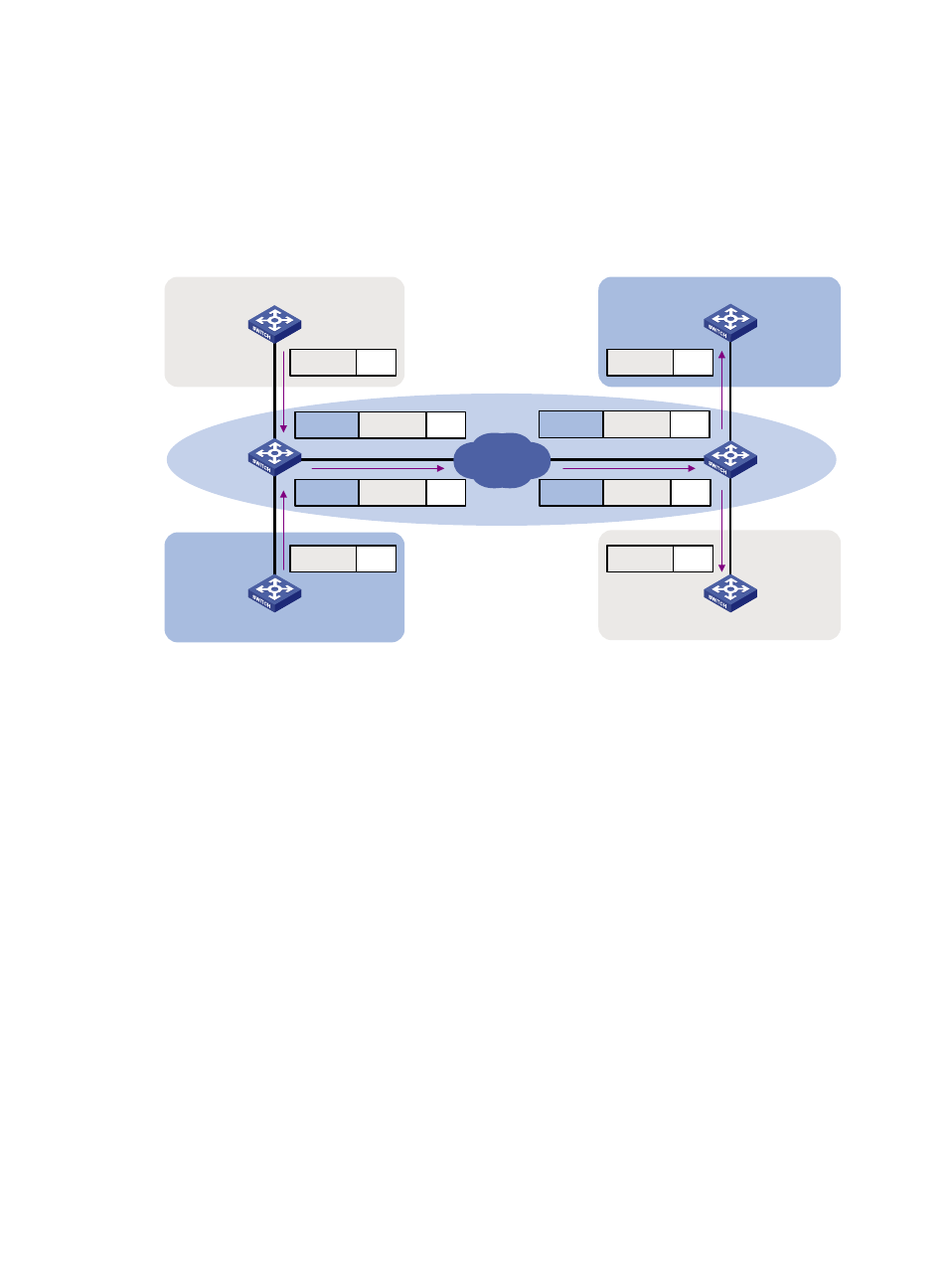Qinq implementations, Protocols and standards – H3C Technologies H3C S5560 Series Switches User Manual
Page 236

202
As shown in
, customer A has remote sites CE 1 and CE 4. Customer B has remote sites CE 2
and CE 3. The CVLANs of the two customers overlap. The service provider assigns SVLANs 3 and 4 to
customers A and B, respectively.
When a tagged frame from CE 1 arrives, PE 1 tags the frame with SVLAN 3. The double-tagged frame
travels over the service provider network until it arrives at PE 2. PE 2 removes the SVLAN tag of the frame,
and then sends the frame to CE 4.
Figure 59 Typical QinQ application scenario
QinQ implementations
QinQ is enabled on a per-port basis. The link type of a QinQ-enabled port can be access, hybrid, or
trunk. The QinQ tagging behaviors are the same across these types of ports.
A QinQ-enabled port tags all incoming frames (tagged or untagged) with the PVID tag.
•
If an incoming frame already has one tag, it becomes a double-tagged frame.
•
If the frame does not have any 802.1Q tags, it becomes a frame tagged with the PVID.
QinQ provides the most basic VLAN manipulation method to tag all incoming frames (tagged or
untagged) with the PVID tag. To perform advanced VLAN manipulations, use VLAN mapping (see
"Configuring VLAN mapping") or QoS policies. For example:
•
To use different SVLANs for different CVLAN tags, use one-to-two VLAN mapping.
•
To replace the SVLAN ID, CVLAN ID, or both IDs for an incoming double-tagged frame, use
two-to-two VLAN mapping.
•
To set the 802.1p priority in SVLAN tags, configure a QoS policy as described in "
Protocols and standards
•
IEEE 802.1Q, IEEE Standard for Local and Metropolitan Area Networks-Virtual Bridged Local Area
Networks
PE 1
Service provider network
PE 2
VLANs 1 to 20
Customer
network B
Customer
network A
VLANs 1 to 10
VLANs 1 to 10
Customer
network A
VLANs 1 to 20
Customer
network B
Data
SVLAN 4
CVLAN B
Data
SVLAN 3
CVLAN A
Data
SVLAN 4
CVLAN B
Data
SVLAN 3
CVLAN A
Data
CVLAN B
Data
CVLAN B
Data
CVLAN A
Data
CVLAN A
CE 3
CE 4
CE 1
CE 2
Network